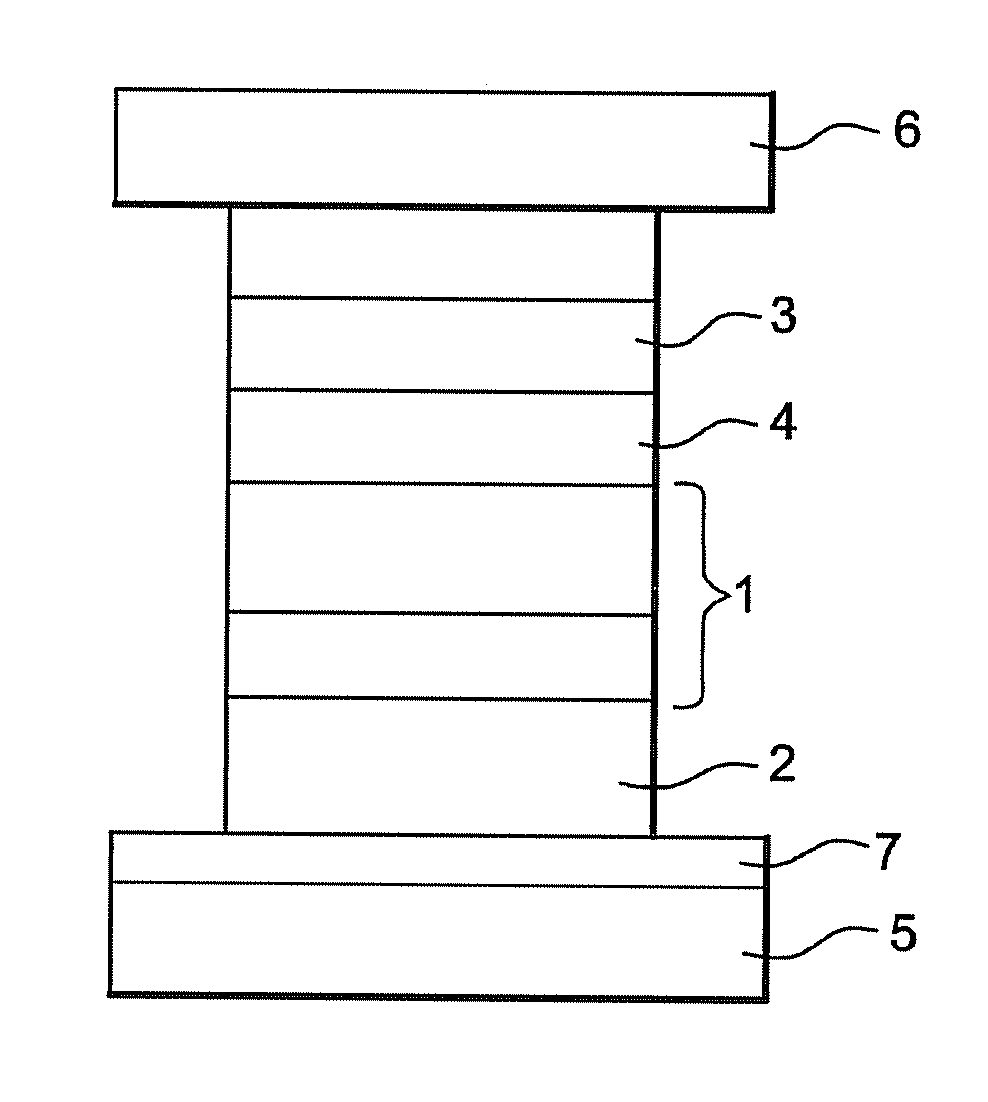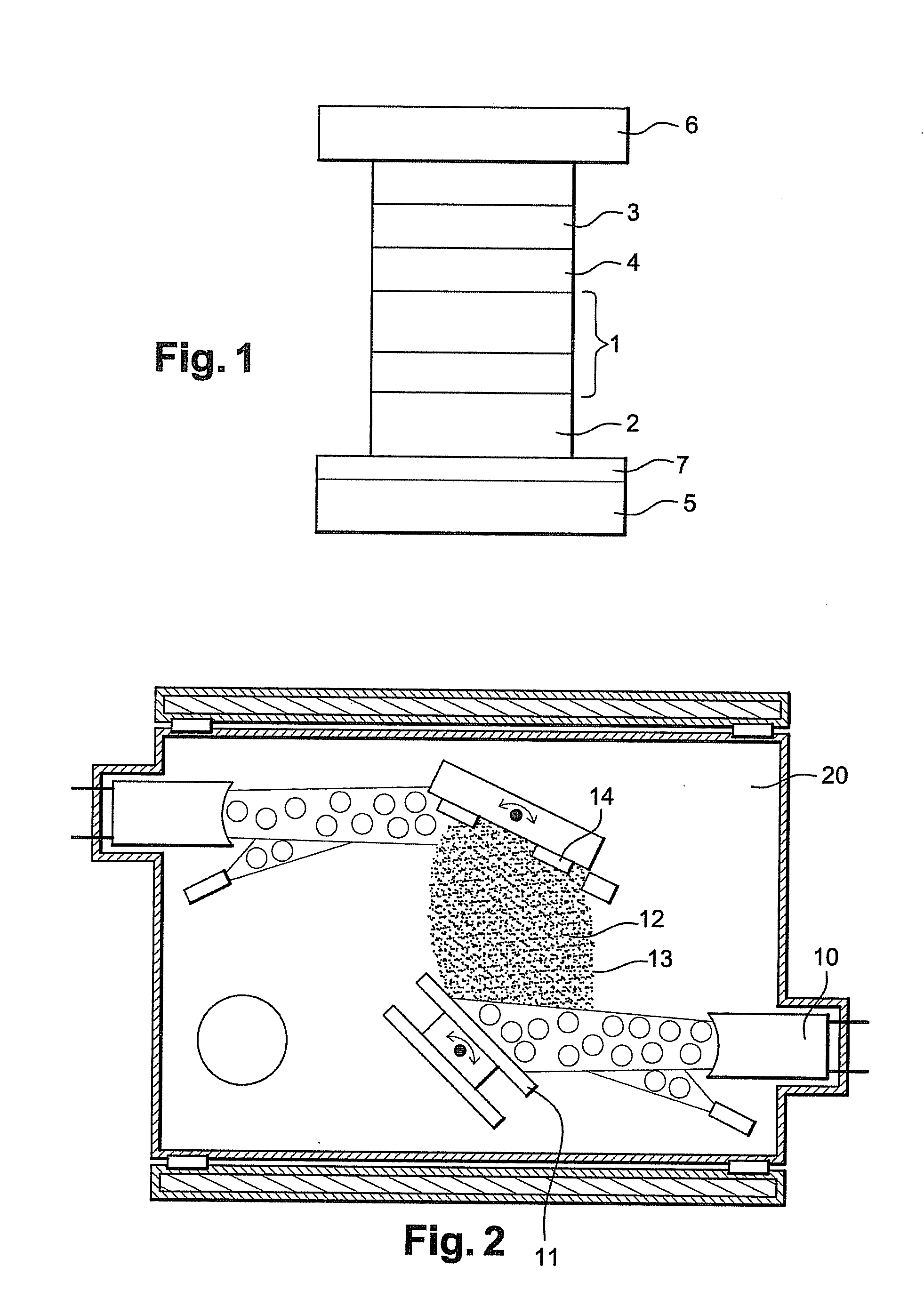Method for producing a magnetic tunnel junction and magnetic tunnel junction thus obtained
a technology of magnetic tunnel junction and magnetic tunnel junction, which is applied in the direction of magneto-resistive sensors, instruments, vacuum evaporation coatings, etc., can solve the reliability problems of magneto-resistive sensors, the inability to sufficiently reduce the ra product, and the difficulty in reaching in a reliable and reproducible way
- Summary
- Abstract
- Description
- Claims
- Application Information
AI Technical Summary
Benefits of technology
Problems solved by technology
Method used
Image
Examples
Embodiment Construction
[0054]FIG. 1 therefore shows a magnetic stack obtained in accordance with the invention, and more specifically intended to constitute a memory point or cell of a magnetic random access memory (MRAM).
[0055]Conventionally, this comprises a locked film 1, in the case in point comprising a film made of a CoFeB alloy 2 nanometres thick, and a film of CoFe 2 nanometres thick. This locked film is coupled magnetically with a film 2 with antiferromagnetic properties, and in the case in point made of an IrMn alloy 6-7 nanometres thick.
[0056]This locked film is separated from a free film 3, also made of CoFeB alloy, and in the case in point ˜3 nanometres thick, by the tunnel barrier 4 made of perovskite, and for example of strontium titanate SrTiO3, with a thickness of less than 1.5 nanometres. Alternatively, the material may be barium titanate or Strontium and Barium titanate (SBT (SrBi2Ta2O9)), SBN (SrBi2Nb2O9)), these different materials having a simple or double Perovskite structure.
[0057]...
PUM
| Property | Measurement | Unit |
|---|---|---|
| temperature | aaaaa | aaaaa |
| impedance | aaaaa | aaaaa |
| impedance | aaaaa | aaaaa |
Abstract
Description
Claims
Application Information
 Login to View More
Login to View More - R&D
- Intellectual Property
- Life Sciences
- Materials
- Tech Scout
- Unparalleled Data Quality
- Higher Quality Content
- 60% Fewer Hallucinations
Browse by: Latest US Patents, China's latest patents, Technical Efficacy Thesaurus, Application Domain, Technology Topic, Popular Technical Reports.
© 2025 PatSnap. All rights reserved.Legal|Privacy policy|Modern Slavery Act Transparency Statement|Sitemap|About US| Contact US: help@patsnap.com


